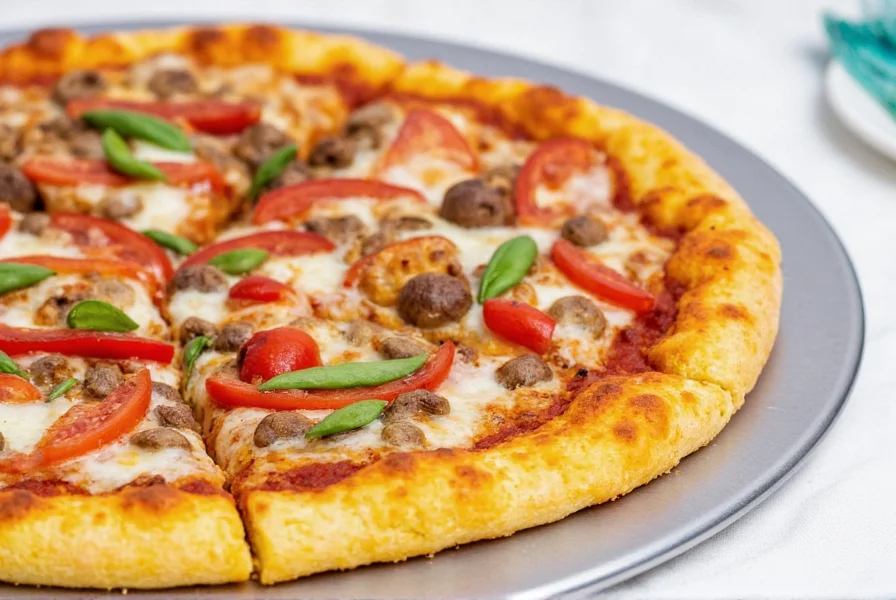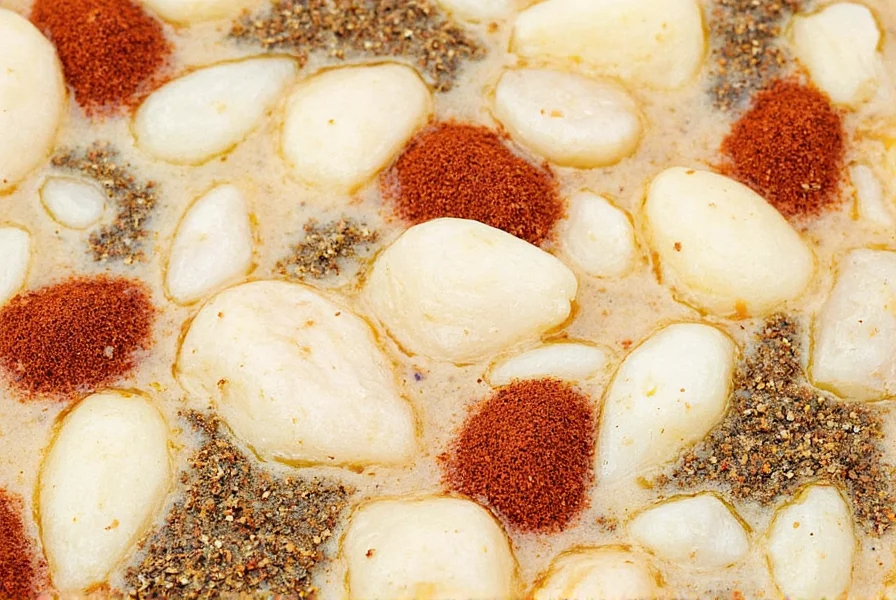Table of Contents
What is McCormick Pizza Seasoning?
Mccormick Pizza Seasoning is a pre-mixed blend of herbs and spices specifically formulated to replicate the classic flavors of Italian-style pizza. This seasoning mix contains a precise combination of oregano, basil, garlic, onion, and other natural herbs that complement tomato sauce and cheese. Unlike generic "Italian seasoning," McCormick's formula is optimized for pizza applications, with a higher concentration of oregano and garlic to enhance the characteristic pizza flavor profile.
Key Ingredients in McCormick Pizza Seasoning
Mccormick Pizza Seasoning contains the following ingredients:
| Ingredient | Percentage | Function |
|---|---|---|
| Dried Oregano | 45% | Provides the dominant herbal note and authentic Italian flavor |
| Dried Basil | 25% | Adds sweet, aromatic notes that balance the oregano |
| Garlic Powder | 15% | Contributes savory depth and umami |
| Onion Powder | 10% | Adds sweetness and complexity to the flavor profile |
| Red Pepper Flakes | 3% | Provides subtle heat and complexity |
| Dried Parsley | 2% | Adds freshness and visual appeal |
This precise blend ensures consistent flavor in every application, whether you're making a classic Margherita or experimenting with gourmet toppings.
How to Use McCormick Pizza Seasoning
For optimal flavor distribution, use McCormick Pizza Seasoning in these specific ways:
1. On Pizza Dough
Before adding sauce and toppings, sprinkle 1 teaspoon of seasoning evenly over the dough surface. This creates a flavorful base layer that infuses the crust with aroma and taste.
2. In Pizza Sauce
For the most even flavor distribution, mix 1/2 teaspoon of seasoning per cup of tomato sauce. Let the sauce sit for 10-15 minutes before using to allow flavors to meld.
3. On Toppings
For meats and vegetables, sprinkle 1/4 teaspoon per serving before adding to the pizza. This ensures each topping component has its own flavor profile while still complementing the overall pizza.

Buying Guide for McCormick Pizza Seasoning
When purchasing McCormick Pizza Seasoning, consider these factors:
1. Packaging Options
- Standard Jar (1.75 oz): Ideal for home cooks who make pizza occasionally
- Family Size (3.5 oz): Best for regular pizza makers or families
- Travel Size (0.5 oz): Perfect for camping trips or small kitchens with limited storage
2. Where to Buy
Mccormick Pizza Seasoning is available at:
- All major grocery stores (Walmart, Target, Kroger, etc.)
- Online retailers (Amazon, Instacart, Walmart.com)
- Mccormick's official website for direct purchase
3. Price Comparison
Compared to similar products:
- Mccormick: $2.99-$5.99 depending on size
- Generic brands: $1.99-$3.99
- Specialty gourmet brands: $4.99-$7.99

Frequently Asked Questions
What exactly is in McCormick Pizza Seasoning?
McCormick Pizza Seasoning contains dried oregano (45%), dried basil (25%), garlic powder (15%), onion powder (10%), red pepper flakes (3%), and dried parsley (2%). The blend is free from artificial flavors, MSG, and preservatives. It's also naturally gluten-free and vegan.
How much McCormick Pizza Seasoning should I use per pizza?
For a standard 12-14 inch pizza, use 1-1.5 teaspoons total. For best results, distribute the seasoning across multiple components: 1 teaspoon on the dough, 1/2 teaspoon in the sauce, and 1/4 teaspoon on toppings. This layered approach creates more complex flavor than adding all seasoning at once.
Is McCormick Pizza Seasoning gluten-free?
Yes, McCormick Pizza Seasoning is naturally gluten-free. McCormick maintains strict allergen control protocols in their facilities, but always check the packaging for the most current information as manufacturing processes may change.
What's the difference between pizza seasoning and Italian seasoning?
Pizza seasoning has a higher concentration of oregano and garlic (typically 60-70% combined) compared to Italian seasoning (which is usually more balanced with basil, oregano, rosemary, thyme, and marjoram). Pizza seasoning also often includes onion powder and red pepper flakes, which are less common in standard Italian seasoning blends.
How should I store McCormick Pizza Seasoning to keep it fresh?
Store in a cool, dry place away from direct sunlight and heat sources. Keep the container tightly sealed. For maximum freshness, consider storing in the refrigerator after opening. Properly stored, McCormick Pizza Seasoning maintains optimal flavor for 2-3 years.
Can I use McCormick Pizza Seasoning for dishes other than pizza?
Absolutely! This versatile seasoning works well with pasta sauces, garlic bread, roasted vegetables, meat dishes, soups, and even salad dressings. Many home cooks use it as an all-purpose Italian seasoning substitute in various recipes beyond pizza.
Alternatives to McCormick Pizza Seasoning
If you're looking for alternatives to McCormick Pizza Seasoning, consider these options:
1. Homemade Pizza Seasoning Blend
Create your own blend using this ratio: 2 parts dried oregano, 1 part dried basil, 1 part garlic powder, 1 part onion powder, 1/2 part red pepper flakes, and 1/2 part dried parsley. This homemade version costs less and allows you to adjust flavors to your preference.
2. Other Commercial Brands
- Spice Islands Pizza Seasoning: Similar flavor profile but slightly sweeter
- Badia Pizza Seasoning: Stronger garlic flavor with more oregano
- Simply Organic Pizza Seasoning: Organic option with similar ingredients
Storage Tips for Maximum Freshness
Proper storage is crucial for maintaining the flavor of your pizza seasoning:
- Keep away from heat: Store at least 12 inches away from stovetops, ovens, or other heat sources
- Avoid moisture: Never store in the refrigerator unless the container is completely airtight
- Use dark containers: If transferring to a different container, choose opaque or dark glass to protect from light
- Label with date: Write the opening date on the container to track freshness
For the best flavor experience, replace your pizza seasoning every 18-24 months, even if it hasn't expired. Over time, the volatile oils in the herbs will evaporate, reducing the potency of the blend.










 浙公网安备
33010002000092号
浙公网安备
33010002000092号 浙B2-20120091-4
浙B2-20120091-4